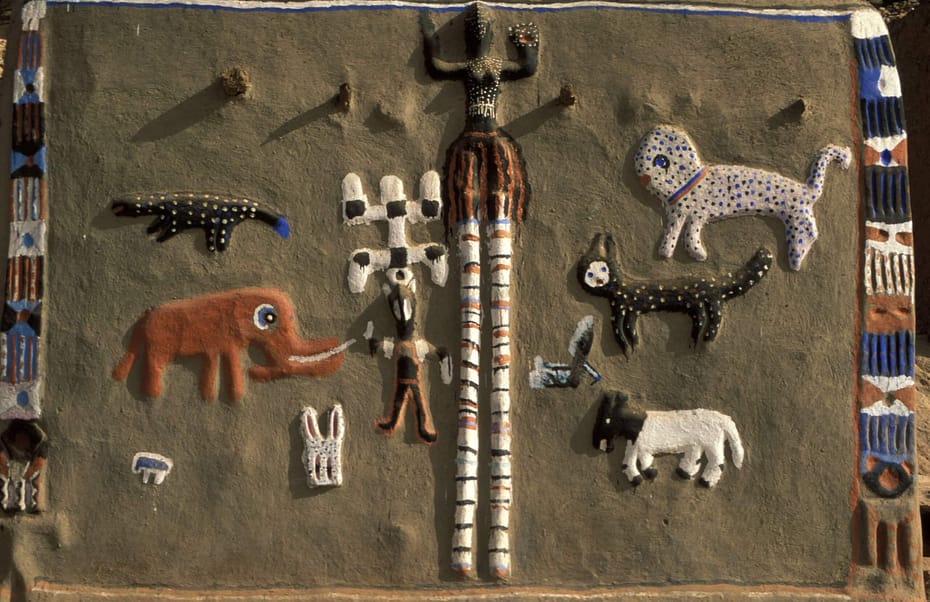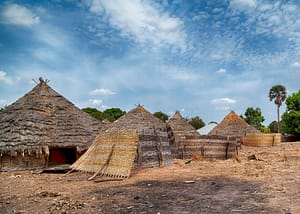Three Ways in which Communities can Benefit from the 30 by 30 Goal in the Global Biodiversity Framework
In the recently published Community-based Conservation Horizon Scan, the first and perhaps most obvious emerging issue is that communities need to be aware of is the Kumming-Montreal Global Biodiversity Framework (GBF). In particular, the most well known “30 by 30 target” was highlighted as either a potential opportunity or threat to community conservation.
As an opportunity, the 30 by 30 target incorporates areas defined as “other effective area-based conservation measures” (OECMs) into the overall target. This means that areas beyond the traditional state-owned National Parks or Reserves (protected areas) could still form part of the overall goal to protect 30% of the land and ocean by 2030. In Southern Africa, lands that are covered by Community-Based Natural Resource Management (CBNRM) programmes are an obvious choice for inclusion as OECMs.
What exactly is an OECM? According to the official definition by the International Union for the Conservation of Nature, an OECM is:
A geographically defined area other than a Protected Area, which is governed and managed in ways that achieve positive and sustained long-term outcomes for the in situ conservation of biodiversity with associated ecosystem functions and services and where applicable, cultural, spiritual, socio–economic, and other locally relevant values.
The IUCN guidelines that expand on this definition emphasise the point that the primary management objective for an OECM is not necessarily nature conservation, although it should be compatible with conservation. For communities that establish Community-Based Organisations (CBOs) that participate in CBNRM, this means that their primary goal could be to generate benefits from their plants or animals, or to protect culturally important sites.
Although it is primarily up to the Parties of the CBD (i.e. national governments) to identify, document and monitor OECMs within their borders, CBOs and other support organisations can assist their governments in this process.
Before CBOs get behind the concept of their areas becoming OECMs, one would have to ask: What could a community gain by having their area defined as an OECM? The three points below are key benefits that could arise by governments defining CBNRM areas as OECMs.
- 1. More funding and support for community-based organisations. Becoming an OECM may open doors for CBOs to access international funding. The GBF agreement included a commitment to increase funding to achieve these goals by US$30 billion per year, which specifically includes support for CBNRM in Target 19. Besides accessing direct funding, communities can partner with supporting NGOs of their choice to increase their own capacity and expertise. If used strategically, CBOs can use their OECM status to access funding or technical support.
- 2. Increases accountability for national governments to their communities.
OECMs must provide long-term conservation value, which means that industrial developments that would lead to biodiversity loss must be prevented in these areas. If a government registers a community area as an OECM on the international Protected Planet database it is committing to conserving that area in the long-term. Communities can thus use this status to protect their areas against short-term, damaging industries that provide few local benefits. - 3. Improves local level governance, monitoring and evaluation
OECMs must be well governed, which is measured through monitoring and evaluating their contributions to biodiversity conservation and “locally relevant values” (for CBNRM, this is most often delivery of socio-economic benefits). Since national governments must report on the status of OECMs to the CBD, monitoring and evaluation systems must be put in place. This increases the responsibility of CBOs to meet good governance standards (e.g. by holding regular community meetings) and to collect data in a systematised way. If used strategically, this could increase accountability of CBOs to their community members and improve their overall management.
While there are more potential benefits to becoming an OECM, these three should strengthen the linkages between international, national and local level governance structures, as illustrated in the graphic below.

Three potential benefits of OECM recognition. Numbered as in the text.
If communities use the OECM designation strategically, the above three benefits can be realised. However, if communities are passive, the 30 by 30 target and associated OECM designation could pose a threat to self-governance and local decision-making capacity.
Although the GBF is worded in such a way as to discourage top-down or authoritarian means of achieving its targets, some governments could still use these targets to increase their control over community managed areas. Rather than improving the management capacity of local CBOs to undertake monitoring and evaluation tasks or to access non-governmental funding and support, government authorities could step in and take over these roles, thus side-lining local governance structures.
To this end, Resource Africa and our partners will continue to engage with African CBD Parties to support the OECM designation for community managed conservation areas. We are working closely with CBOs in Southern Africa to develop local monitoring and evaluation procedures that will reflect their progress against locally relevant priorities and biodiversity conservation targets. This work will provide the basis for registering their areas as OECMs on international databases.
The next few years are crucial for local CBOs to use the new GBF targets to their advantage. Resource Africa is working with CBOs and the regional Community Leaders Network of Southern Africa to take these opportunities to achieve their sustainable development and biodiversity goals



